Pipe Stiffness PVC vs. Fiberglass
9/21/2018
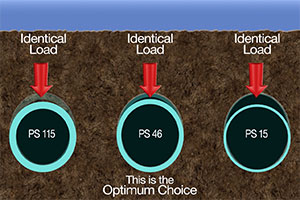
PVC's most commonly used pipe stiffness is 46 psi for sewer applications and righfully so. PS46 was not pulled out of thin air, significant testing was done by Utah State University. The results of these tests reveal the optimum PVC pipe stiffness to be 37 psi. Lower stiffness PVC pipe had significantly higher deflections while higher stiffness PVC pipe had slightly higher deflections. It is clear that increasing the stiffness above 37 psi or 115 psi provides no advantage in preventing deflection for PVC pipe. A pipe stiffness of 46 psi was selected as the optimum with an understanding that during hot summer installations a 46 psi PVC pipe has a reduced stiffness that is approximately 37 psi.
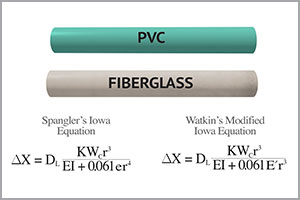
Running Modified Iowa Calculations reveals that increasing pipe stiffness above 46 psi results in minimal decreases in deflection. This does validate the idea that an optimum does exist and further solidified the PVC industry's selection of SDR PS46 as the best option for end users. This is why as an industry, PVC manufacturers have recommended 46 psi for over 40 years as the standard for conservative design.
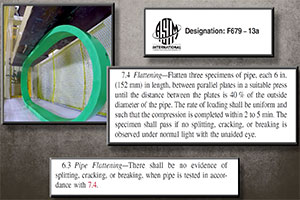
When it comes to comparing PVC vs Fiberglass. A common misunderstanding is that PVC must be specified with a higher pipe stiffness to be equal to fiberglass pipe. Both PVC and fiberglass employ the same test to determine pipe stiffness: ASTM D2412 "Standard Test Method for Determination of Eternal Loading Characteristics of Plastic Pipe by Parallel-Plate Loading." Also, both standards include the most common pipe stiffness of 46 psi and less flexible product with pipe stiffness of 72 to 75 psi. The F679 standard for PVC also provides an even stiffer value with pipe stiffness of 115 psi. Since pipe stiffness values are equivalent, the deflection calculations should provide the same percentage deflection no matter which pipe is used.
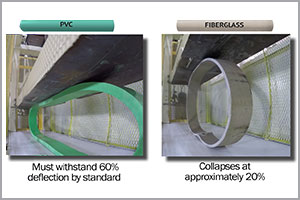
Both PVC and Fiberglass are considered flexible conduits. Spangler's Iowa Equation and later Watkins Modified Iowa equation have been used since 1941 to determine deflection in flexible pipes. The difference in materials determine how much deflection the specific pipe can withstand. PVC as part of its daily routine quality assurance measures must withstand 60% deflection by standard. Fiberglass on the other hand has no such requirement and collapses at approximately 20%.
PVC by standard has a 7.5% recommended allowable deflection no matter what size or stiffness; whereas fiberglass has a limit of 3% due to deflection and strain limitations on its PS72 products, if you are designing for a minimum 100 year life.
The PVC Pipe Association cannot identify one single collapse of 46 psi PVC sanitary sewer pipe over all this time. It is highly likely you can't either. There may be the occasional instance of over deflection, where you specify 5% and get 6%, caused by improper placement and compaction of the embedment, but you just don't see catastrophic failures.
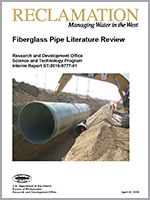
Fiberglass on the other hand has a long history of catastrophic failures as this Bureau of Reclamation Literature Review documents. Yes, many of these were pressure applications, but even today, we regularly hear about catastrophic failures of fiberglass pipe in gravity application.
For more information visit the PVC Pipe Association at Uni-Bell.org.